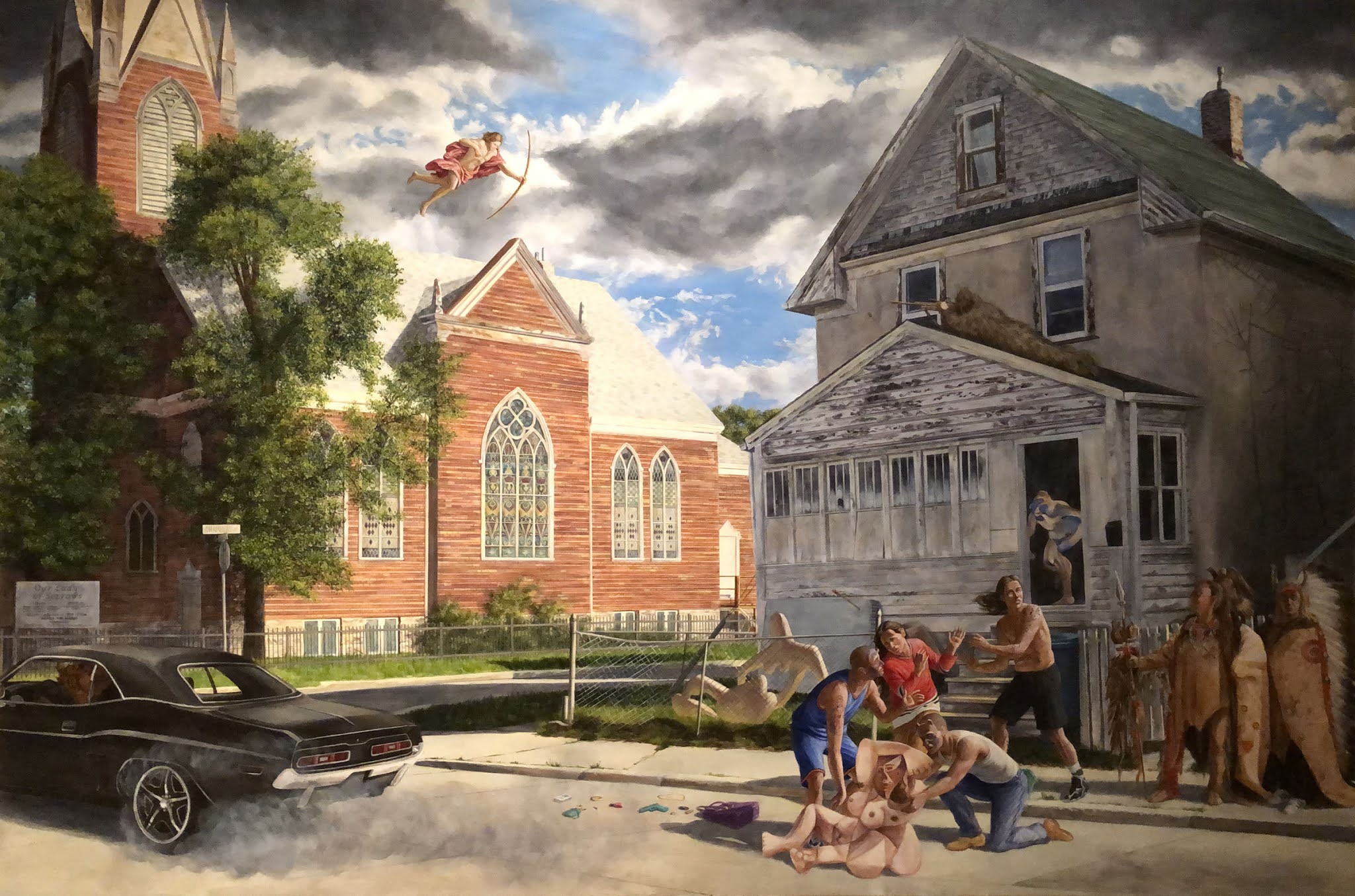 |
| Kent Monkman, Death of the Female, 2014. Tia Collection |
The Autry Museum of the American West is showing two notable loans from the Santa Fe-based Tia Collection: An 18th-century Virgin of Guadalupe and a large 2014 painting by Kent Monkman, Death of the Female (2014). Monkman is the Cree artist who created two allegorical paintings for the Metropolitan Museum's Great Hall in 2019. The painting at the Autry shows a cubist nude as the victim of a hit-and-run driver who appears to be a minotaur. The woman is helped by Native-American men. A Francis Bacon nude prepares to descend a staircase as a Henry Moore sculpture occupies the world's saddest sculpture garden. At far right is a group of Mandan warriors taken from an echt-colonial painting by George Catlin. I'll leave you to decide why a Bigfoot sniper is aiming at an airborne Jesus/Cupid, who's brought a bow and arrow to a gunfight.
Detail
 |
| Minotaur |
 |
| Bigfoot |
The Tia Collection has been assembled by a secretive New Mexico collector (Tia is his daughter's name). Lately it's been placing works on loan to museums nationwide.
 |
| Unknown artist, Virgen de Guadalupe, mid 18th century. Tia Collection |
 |
| Dalbert Castro, Inner World, 1989 |
A pandemic-rescheduled exhibition, "When I Remember I See Red: American Indian Art and Activism in California," runs through Nov. 14, 2021. Several paintings take unexpected tangents on modernism (like Monkman, just less jokey). A small Dalbert Castro painting has a Mary Blair vibe. It refers to a Maidu dance headdress made from black and orange feathers.
 |
| Frank Day, Ishi and Companion at Iamin Mool, about 1973 |
Frank Day (Konkow Maidu, 1902-1976) is a major figure of California art who deserves a hundred times more attention than he's gotten. The several paintings here are a concise introduction.
 |
| Karen Noble, Sky People, about 2015 |
Karen Noble's
Sky People melds indigenous oral literature with Hubble Space Telescope images and color field painting. (PST 2024: Art × Science organizers might take note.)

Several Autry displays have been revamped. Remember when kids could snap pics behind Old West jail bars? That's gone the way of the animatronic OK Corral shoot-out. In its place is a small, effective installation on the serious business of Western incarceration. It spans prison folk art (such as a tattoo gun by black-and-gray-style artist Carlos Macias); a view painting of a Japanese-American interment camp by Taneyuki Dan Harada; super-rare early examples of ledger art created by Kiowa leader Zotom during his imprisonment at Fort Marion, Fla., in the 1870s.
All demonstrate that "Western art" can be a lot more interesting than Remington and Russell.










Comments
I tend to favor artworks that show technical skill, not just creative skill. Which is why I wish the Broad Museum had more works by a Chuck Close versus very message-y abstract artists.
However, I'm not a big fan of pre-Raphealite paintings from the 1800's. Something about them give me a sense of diabetes. But the opposite extreme isn't all that ideal either.